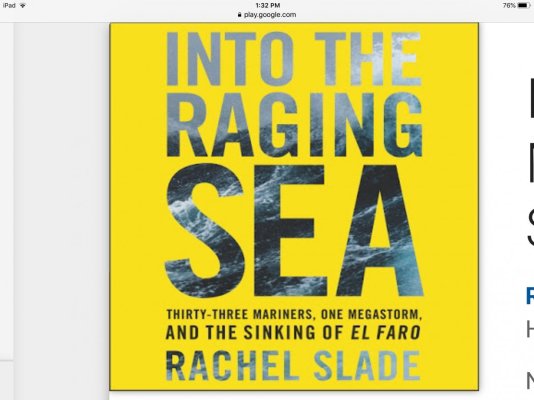True....but we have to ask ourselves...how many of those "un-anticipated events" might not have happened if the Captain was more dilligent in his duties.
Consider the following:
There were many human factors involved including issues regarding maintenance, mechanical status, cargo tie down and information reporting. This Master was known as a "stateroom captain" and one of his supervisors said "I'm not even sure he knows what the deck looks like". He was supposed to be written up for finding a watch officer sleeping on mulitiple occiasions and not doing anything about it. He noted in June that the anemometer was not working, but never submitted a work order to fix it. ( important to note that they didn't realize how close they were to the storm because they could not determine the wind direction !) He was supposed to be written up another time for not ensuring other repairs were done in a timely manner.
So if the Master doesn't do his rounds, discipline his crew or take care of the ship.....the officers and crew are likely to do the same.
He was called at 11:05, 11:38 and ( I forget the exact time...but I think around 2:00) with suggestions from the bridge that he should look at the latest weather data. During one of these calls he was told that at 4:00am they would be 22 miles from the center of the hurricane.
While he was "sleeping like a baby" ( his words ) the bridge crew were talking about whether their survival suits fit, the noises they heard were probably things breaking loose in the superstructure, and the ship speed had gone down 20%
He did not come to the bridge until 4:09, and only stayed for 25 minutes and he went to the galley. He had to be called back to the bridge
At 4:45 the barometer indicated 960 mb, and the center of the storm was 950.
The inquiry board determined that at 5:43 he failed to recognize the gravity of the situation. That was almost 2 hours before they abandoned ship
At 6:12 they lost propulsion...if they abandoned ship then they would have had a greater chance to get into suits, get into rafts and get their location out.
( this one seems HUGE to me ) The Captain never notified anyone they were abandoning ship, or provided an updated location. The Coast Guard didn't know there were bodies in the water, and when they did....they didn't know where to look.
The ship left port with less than the required amount of oil, and the engine died because the oil pump couldn't get enough oil when the ship was listing. I don't expect the Master to check the oil, but perhaps his lackadaisical attitude existed in the engine room. They took on water because a scuttle was open for a significant period, after the crew was known to have been inconsistant with securing those scuttles. Perhaps a pre-departure meeting stating that this would be a rough one would have gotten some attention to the cargo tie downs, and oil levels, and the scuttles. I know..that is total speculation on my part, but it doesn't seem unreasonable.
Perhaps the Master gets his attitude from Tote. They had internal memos saying he needs to be written up, but he never was. They know he does not make rounds and check cargo spaces but they don't mention it, and end up promoting him.
As a previous poster said...no, the Capt didn't just recklessly sail straight into a hurricane. He did however, take a ship in less than great condition, into an area very near a tropical storm, did not listen to his officers who tried to alert him to the conditions, and slept as things spiralled down hill. When he finally did show up for work, he failed to realize the danger they were in, and waited until just minutes before the ship went under to give the order to abandon ship, and then never told anyone where they were, or that they were doing so.
Disclaimer: I have never been a professional mariner, so I admit that I do not know what conditions are like for those that are, or the pressure they are under when they work. I also have never played in the NBA, but I know when LeBron James has a bad game. It happens. He's human. A Captain is human too, and he or she is going to make mistakes. But in an environment where mistakes are measured in lives lost, there is a very narrow margin of acceptable performance. Our society holds people like airline pilots, surgeons, and ship captains to a very high standard, and justifiably so. Fair or not, that's just the way it is. If you don't like that, don't take that job. This captain failed to do all he could for his crew and his ship. And he failed in that responsibility on more than one occaision. That doesn't mean that all others involved are blameless by any means, or even that his wrongs were the most severe, but he absolutely deserves to be blamed for this. I suspect many civil suits will follow and support that judgement.


